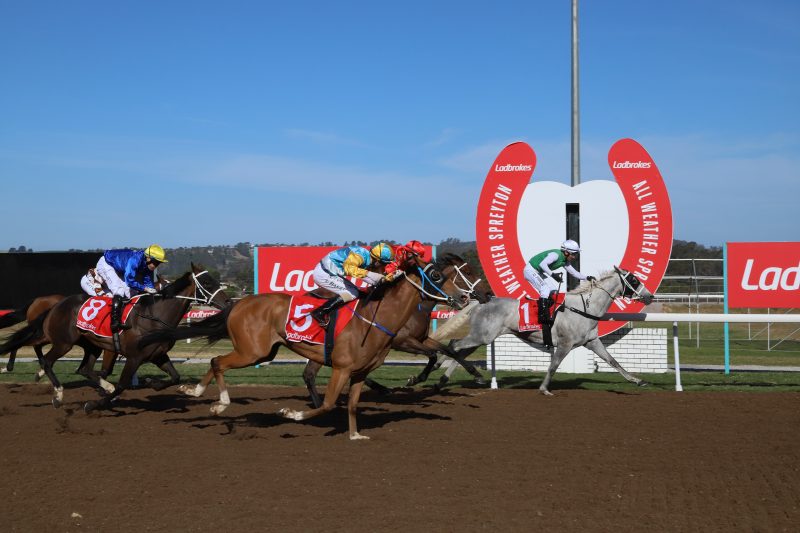One year away from its 10-year anniversary the Devonport synthetic track, now known as the Ladbrokes All Weather, has proven pivotal to the continuity of racing in Tasmania, particularly during the winter months.
Currently in a stretch of eight consecutive meetings to be held at the track, punters love the reliability that comes with racing on a synthetic surface and trainers are showing their support with consistent big nominations for Devonport meetings since racing resumed in the state on 14 June following the COVID-19 shutdown.
Devonport Track Manager Nigel Whelan has been involved with the racecourse for over 20 years, seeing the move from a grass track to the new Tapeta surface back in 2011.
“It’s been the best thing that’s ever happened,” said Whelan who has held his current position for around 16 years.
The rail is in the true position for every meeting and visually there is little change to the appearance but as Whelan explains a lot of work goes in behind the scenes to produce what is generally a very fair racing surface.
“There’s no irrigation, there’s no fertilising and we don’t have to mow. It may be all machinery, but we’ve still got to get it right.
“We groom the track on a Monday and a Thursday with a tractor and a machine we call a four-metre gallop master. Which grooms the first 2-3 inches.
“Prepping for a race day we will do it on a Saturday prior to a Sunday meeting and we will also do it Sunday after the races ready for training the next day,” Whelan explained with the track having horses working Monday through Saturday in addition to race meetings that are scheduled.
“The good thing about it whether it’s rain, sunshine or snow they can still get out on it for track work which is a great bonus for the trainer’s here,” added the Track Manager who says around 12 trainers regularly work horses on the track.
Affectionately nicknamed “Gods Carpet” by many punters around the country, the synthetic is far less susceptible to the patterns that can develop on grass tracks which means the form can be done with confidence.
“Weather can have a little bit of an impact on the top part of the surface. When it’s colder or a little bit damp it actually races better than what it does when it’s hot.
“It races a little bit faster when it’s cold or wet and it’s not quite as soft as it would be in the middle of summer,” said Whelan providing a guide to what can influence the way the track races.
The most recent meeting held in Devonport on 2 August saw the majority of winners run down the middle or wider in the home straight, but Whelan doesn’t attribute this to any change to track preparation and wouldn’t expect this to be a consistent pattern over the next few weeks.
“I think it plays the same from the inside to the outside.
“Horses can win on the rail, off the rail or down the middle.”
With the state’s two main grass tracks in Hobart and Launceston having a break until Spring it’s a luxury for all in the industry to not have the concern of losing a meeting to weather, an example being the extreme conditions in Tasmania this week.
“We’re getting good reports with how it’s racing.
“It’s been a blessing for racing in the state.”
